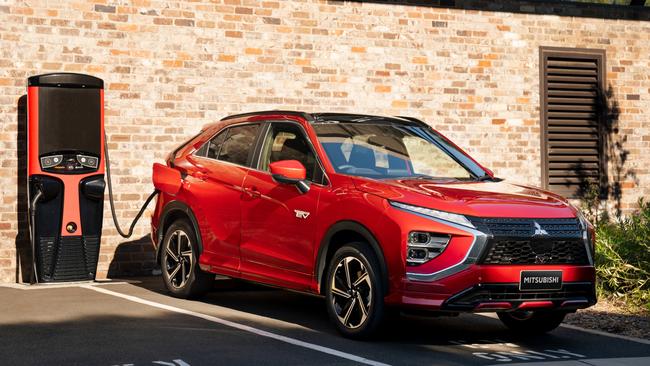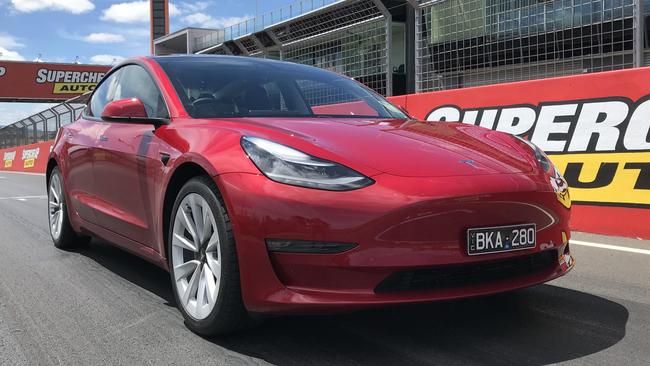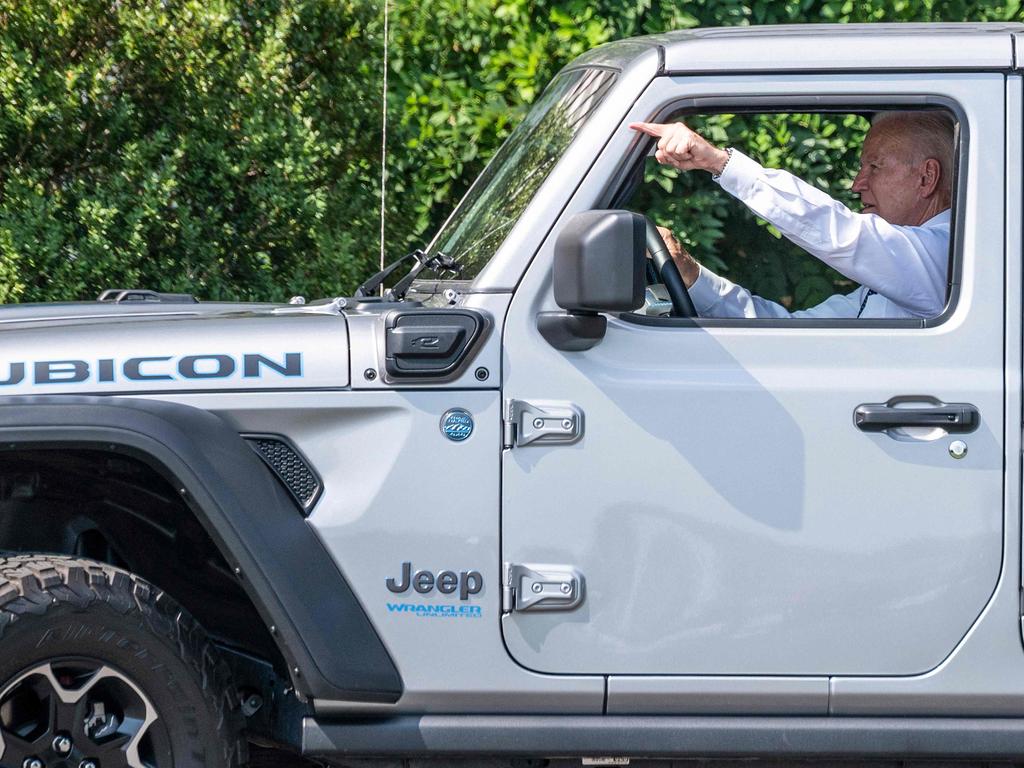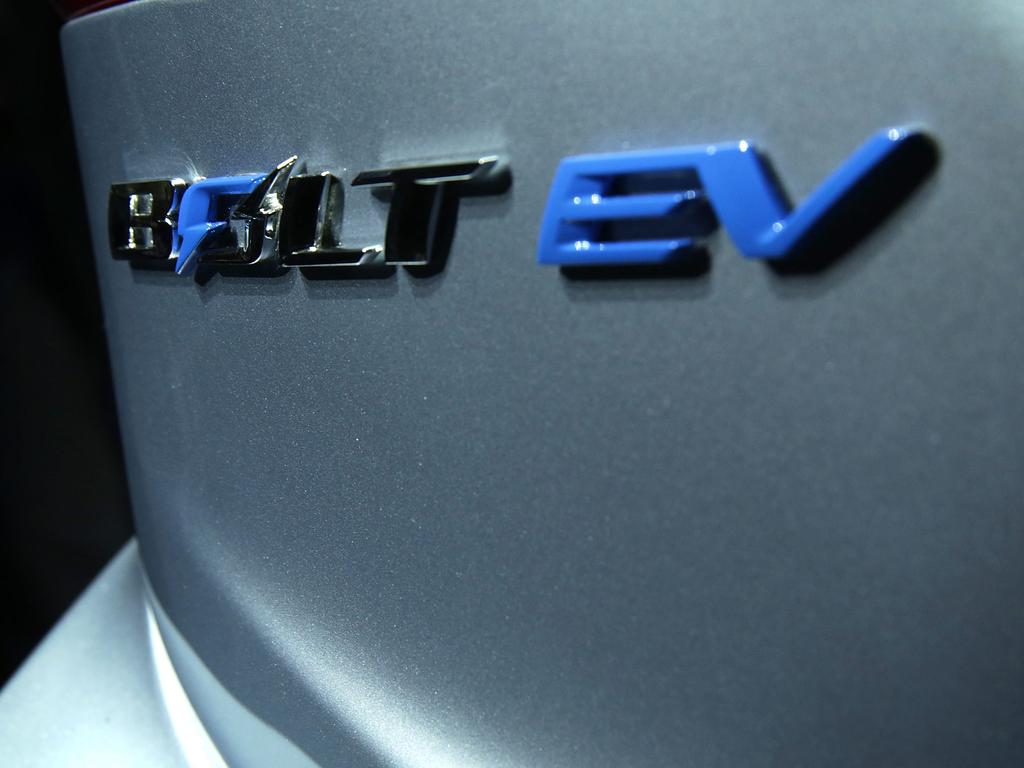Mitsubishi says fully-electric vehicles are being unfairly subsidised while hybrids are penalised
Policies designed to boost electric vehicle take-up are discriminating against hybrids and risk slowing our energy transition, Mitsubishi says.

Current “unfair” policy settings discriminate against hybrid electric vehicles, putting at risk their take up in Australia and slowing the nation’s journey to net zero carbon emissions, Mitsubishi Motors Australia says.
The Japanese vehicle manufacturer, which currently sells the plug-in hybrid electric (PHEV) Outlander and Eclipse Cross in Australia, says in its white paper The Road to Net Zero Emissions, due to be released on Thursday, that subsidies at the state level which give cash handouts to electric-only vehicles are inequitable
Combined with new road-user charges being introduced or already in play, which slug hybrid owners as well as EV drivers for how many kilometres they cover, mean the effect is a doubly unfair, Mitsubishi says.
In New South Wales, Victoria and South Australia, there are $3000 subsidies available or proposed which new car purchasers can claim when buying a battery electric or hydrogen fuel cell vehicle, but plug-in hybrids are not eligible.
Mitsubishi argues PHEVs are much better suited to helping the nation transition to a fully-electric future, given they avoid the “range anxiety” which comes with fully-electric vehicles which suffer from a need for access to charging infrastructure.
Mitsubishi says PHEVs overwhelmingly use electric power for city-based trips, providing the emissions benefit sought, while also being adaptable for longer journeys, and are cheaper, providing a realistic entry point for buyers.
“While PHEVs are classified by the states and territories as an EV variant and offer a range of immediate benefits including access to existing infrastructure and an affordable entry price, emerging Australian state government policies do not support it on an equal footing with the other two main variants: battery electric (BEV) and hydrogen fuel cell electric vehicles (FCEV),’’ Mitsubishi says.
“This is despite both BEV and FCEV being new or emerging technologies that require
significant infrastructure investment, offering limited utility for Australian drivers, and being unaffordable for many.
“This emerging state-level policy and legislation is creating a patchwork, which further risks the country’s progress, potentially placing Australia’s net-zero goal by 2050 and the planet at risk.’’
READ MORE:National vision for electric vehicles badly needed | Ampol stakes future on being part of the electric solution
“While PHEVs are classified by the states and territories as an EV variant and offer a range of immediate benefits including access to existing infrastructure and an affordable entry price, emerging Australian state government policies do not support it on an equal footing with the other two main variants: battery electric (BEV) and hydrogen fuel cell electric vehicles (FCEV),’’ Mitsubishi says.
“This is despite both BEV and FCEV being new or emerging technologies that require
significant infrastructure investment, offering limited utility for Australian drivers, and being unaffordable for many.
“This emerging state-level policy and legislation is creating a patchwork, which further risks the country’s progress, potentially placing Australia’s net-zero goal by 2050 and the planet at risk.’’
Mitsubishi director of marketing and operations Rob Nazzari said currently-available PHEV solutions “will work for our way of life and geography — including those who drive longer distances’’.
“Mitsubishi offers an honest car for an honest price – giving all Australians the opportunity to lower their cost of living while also contributing to a low-carbon future,’’ he said.
“Today, we are proud that our PHEVs are an affordable and practical choice … when compared to many EVs.
“If they were eligible for a subsidy, our entry level plug-in hybrid EV would be within a whisker of the $41,000 average purchase price for new vehicles in Australia.’’
In comparison, the fully-electric Tesla Model 3 currently sells for about $64,500 in Australia.
Mitsubishi said that studies it had conducted indicated that drivers who travel less than 25,000km per year on short journeys could run entirely on electric power, producing no tailpipe emissions.

“Despite these and other benefits, however, PHEV’s potential contribution to the Net Zero goal could be rendered unviable for Australians due to policy framework gaps and limited consumer and business uptake,’’ the white paper says.
“Fast-tracking Australia’s journey to net-zero must maximise the uptake of the fit-for-purpose technology available today.
“This can be achieved by ensuring a uniform and equitable approach to policy decisions such as incentives and a road user charging system that prioritise consumer choice, allowing the consumer to choose the EV technology that will best suit their individual circumstances.’’
Mitsubishi says PHEVs can “take the average Australian 84 per cent down the road to zero emissions immediately, using current infrastructure and the ability to capitalise on the high rate of installed solar panels in Australian homes.’’
The electric vehicle policy and infrastructure space in Australia is evolving rapidly, with major players such as Ampol and Trevor St Baker’s Evie Networks recently successful in winning a large chunk of the funding on offer from the Australian Renewable Energy Agency (ARENA) to roll out 403 fast-charging stations across the nation.
Ampol said at the time that “E-mobility infrastructure is a central pillar” to its strategy going forward, while Evie has committed to rolling out a $30m fast-charging network.
The most recent figures from the Federal Chamber of Automotive Industries, released earlier this month, show that the sale of electric sports utility vehicles increased more than six-fold in August compared with the same month last year.







To join the conversation, please log in. Don't have an account? Register
Join the conversation, you are commenting as Logout